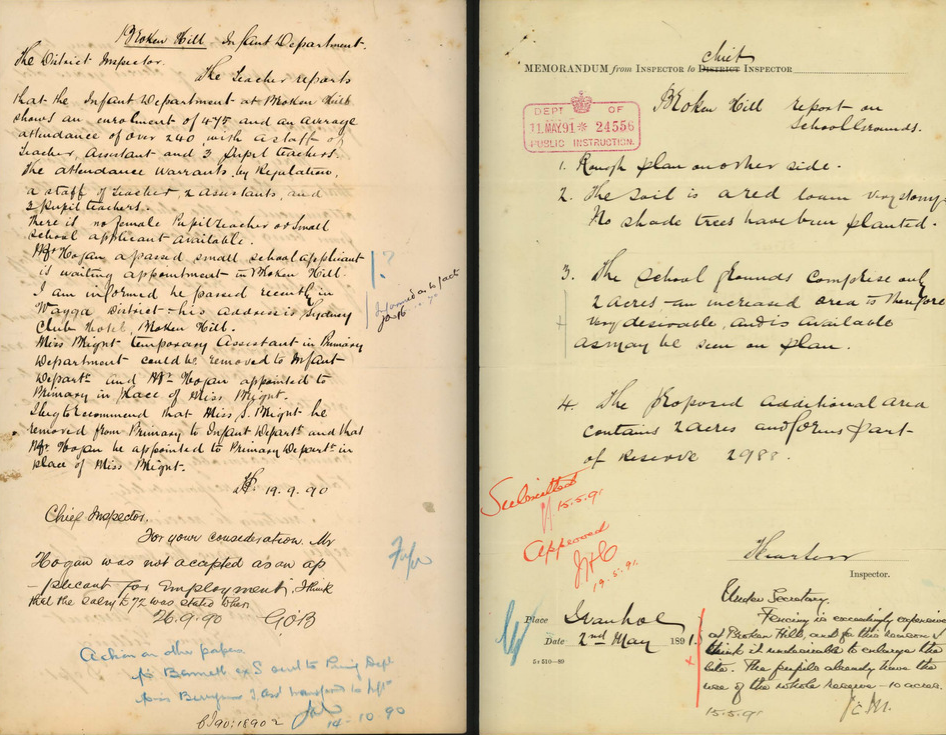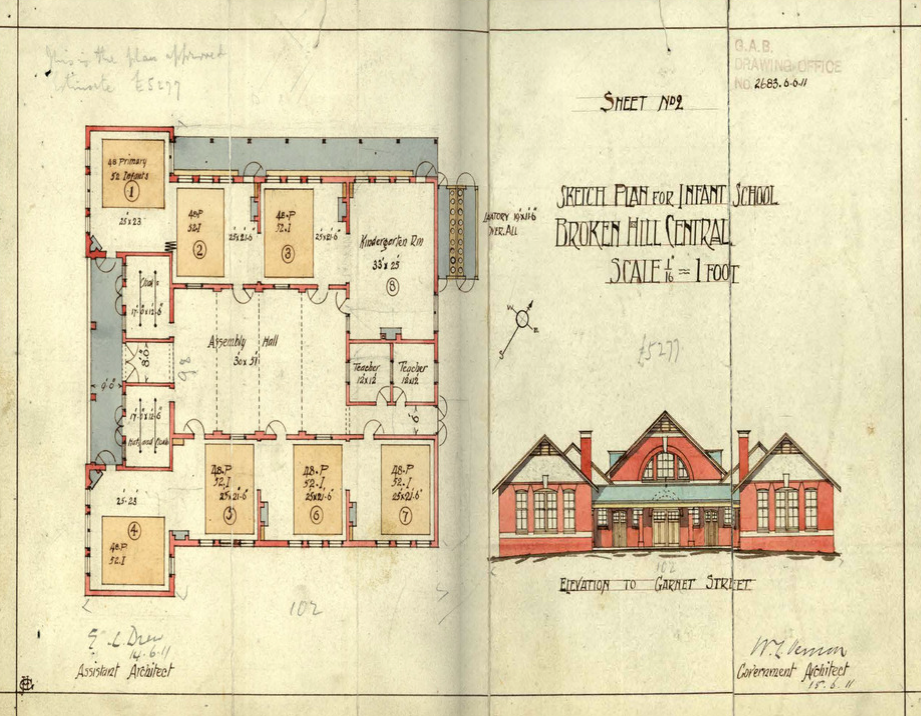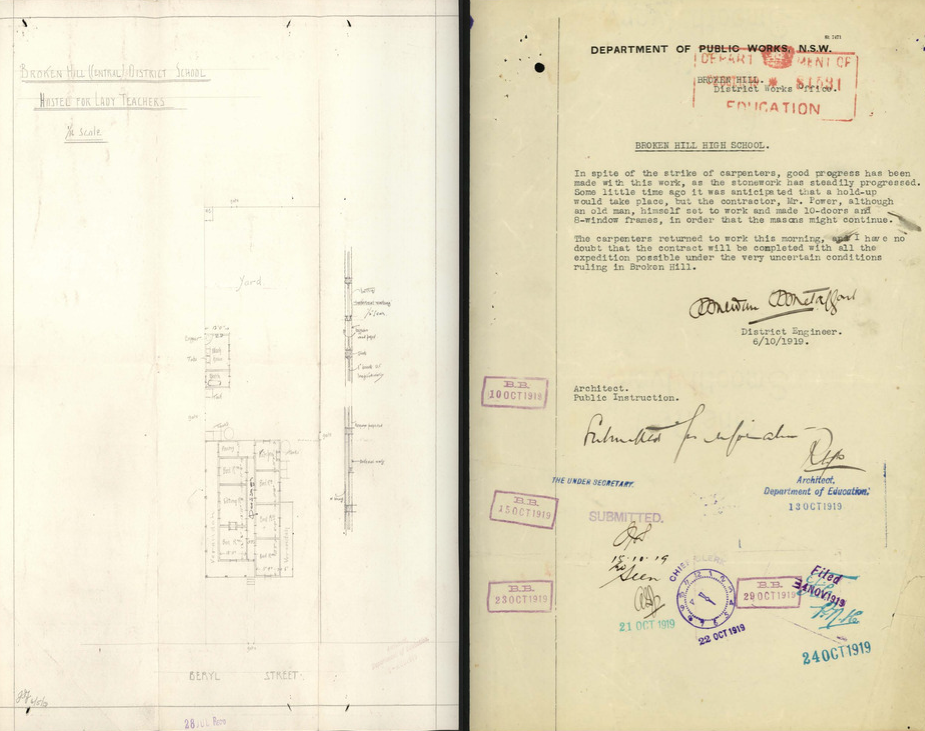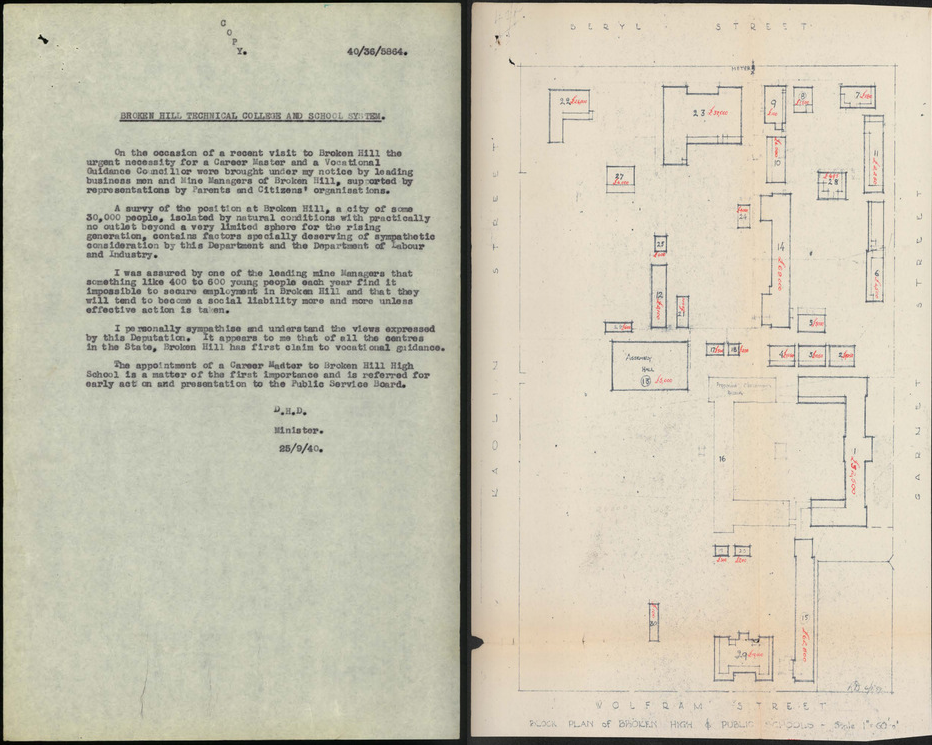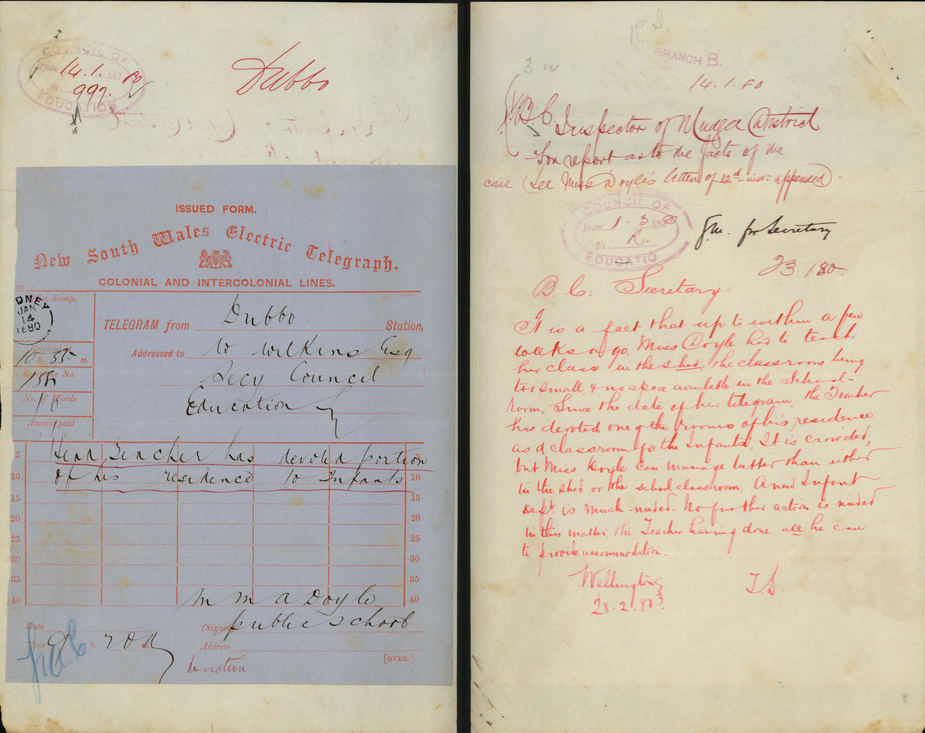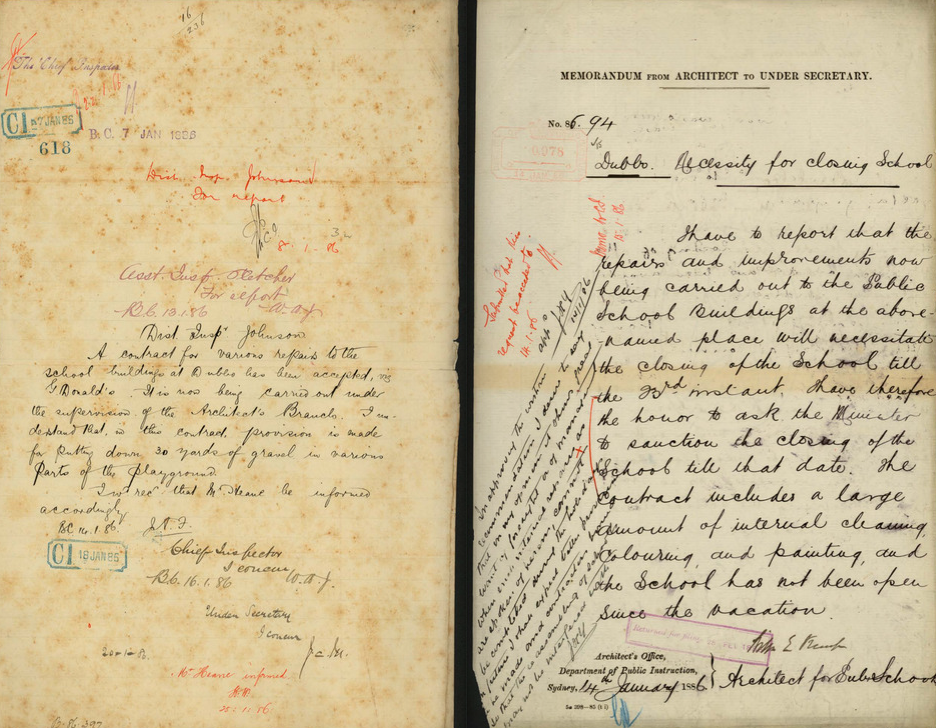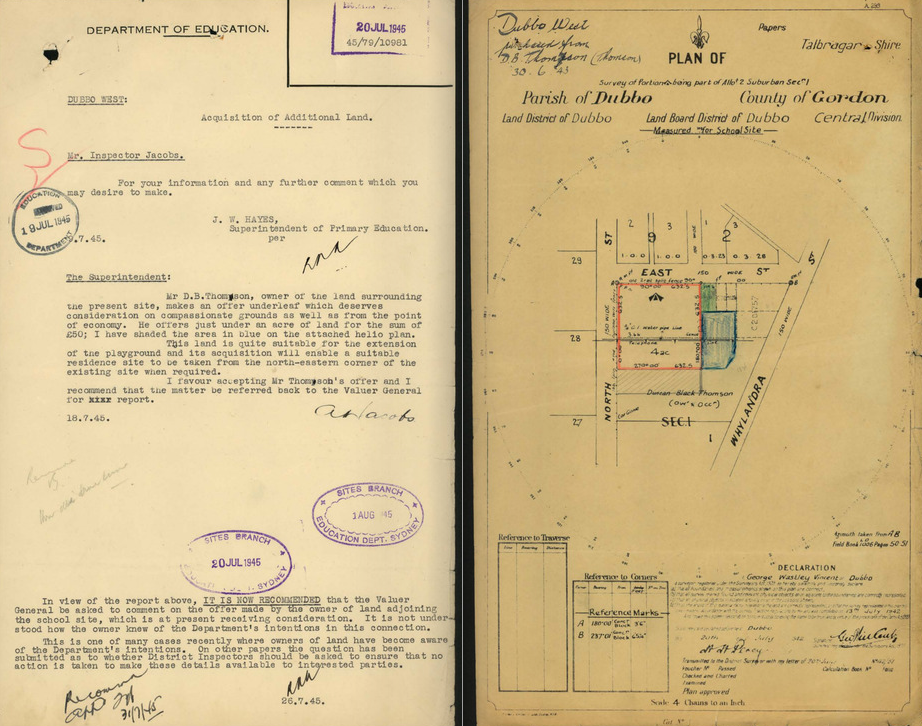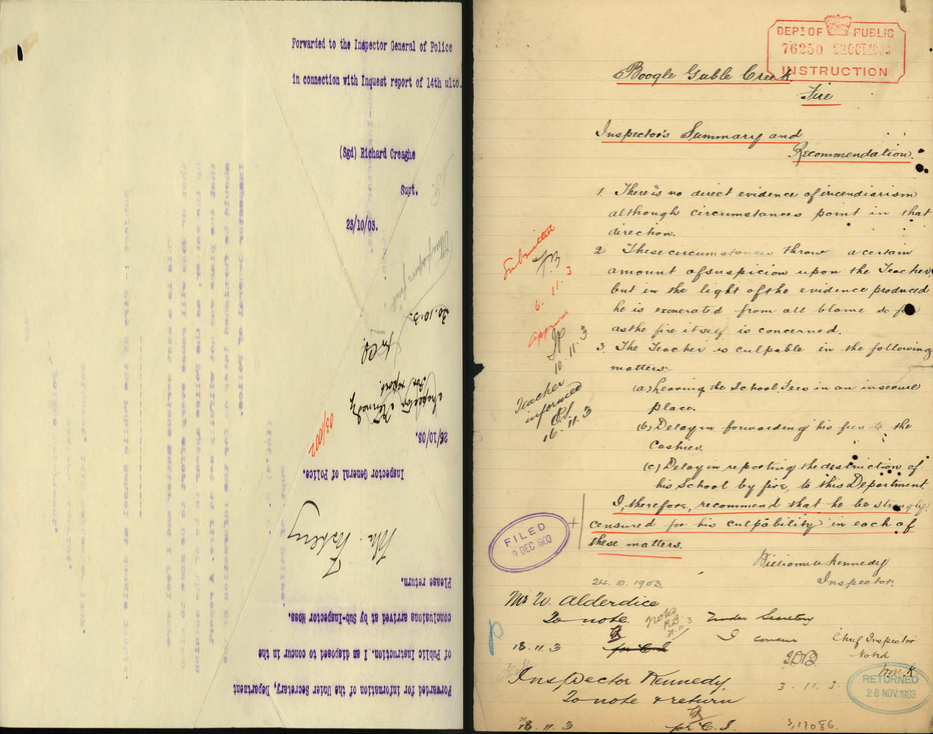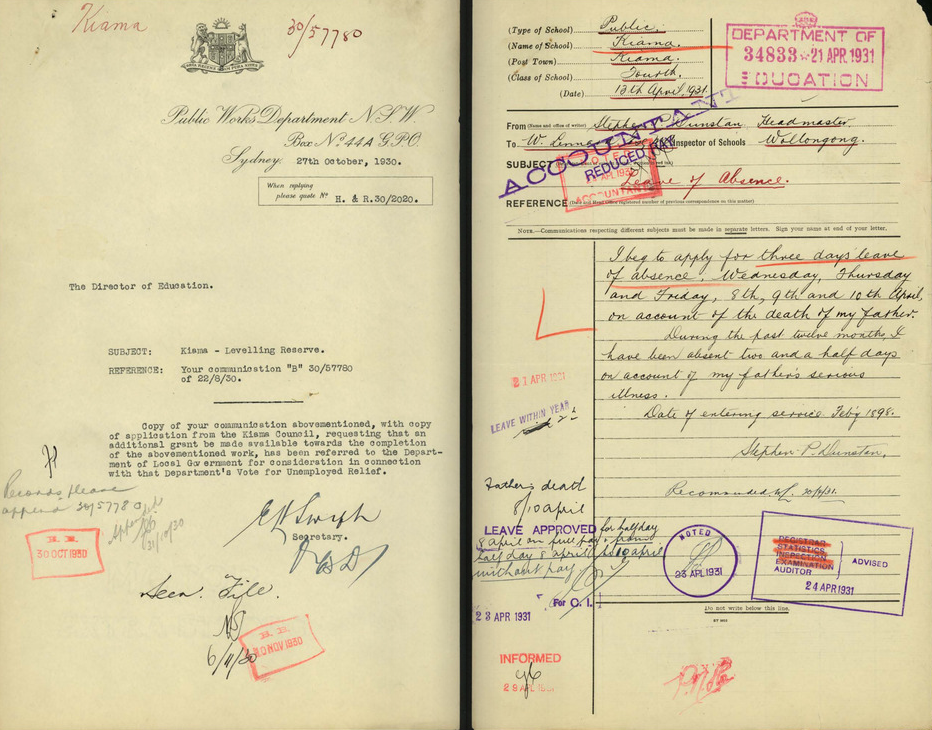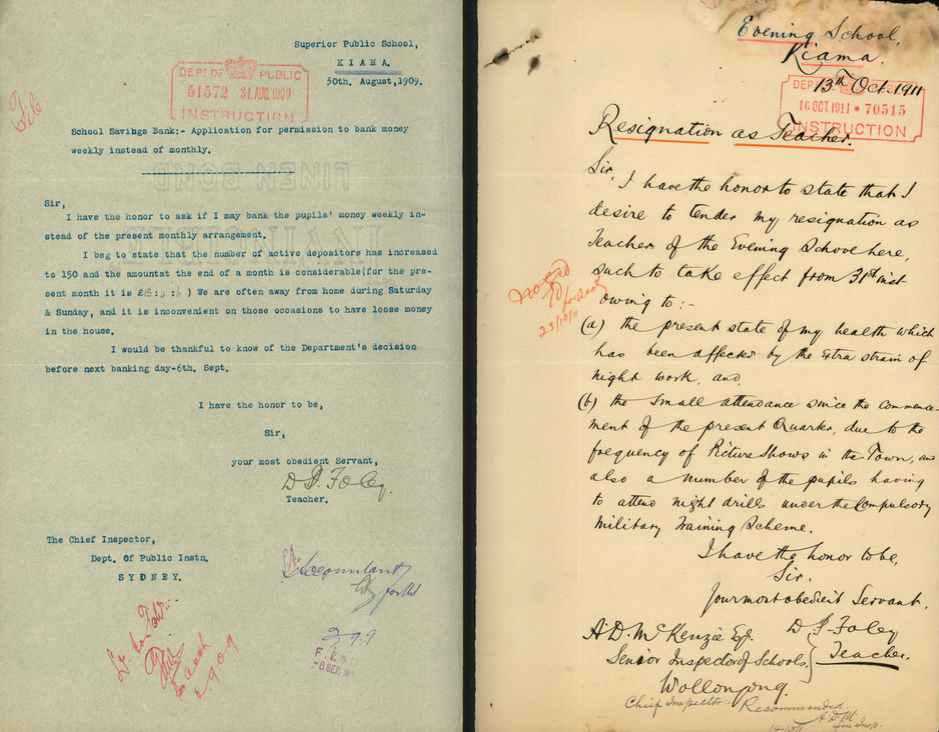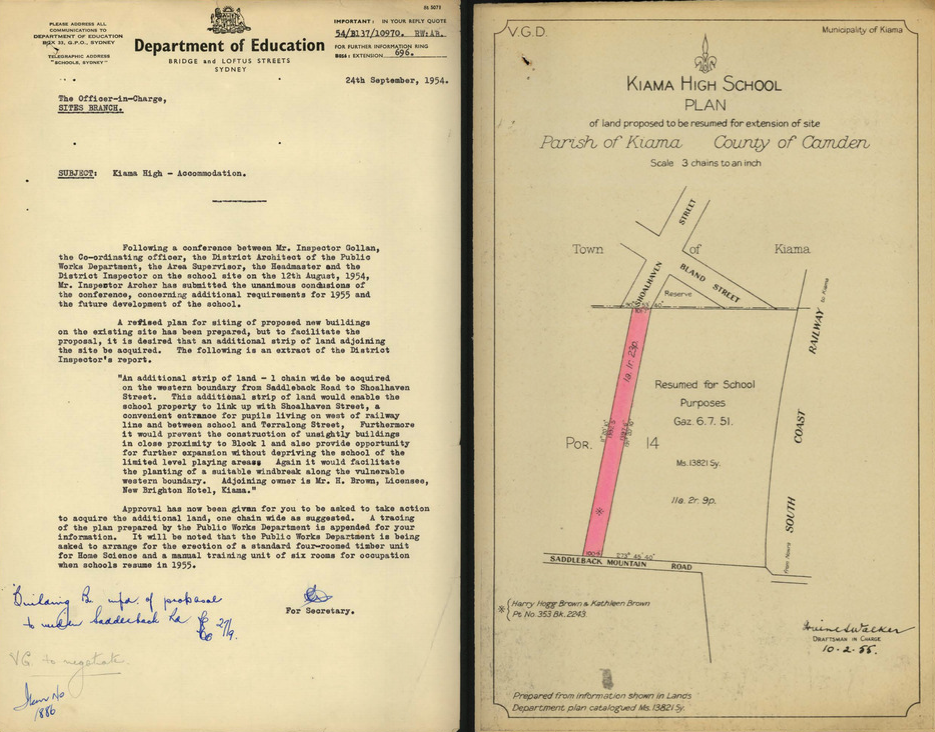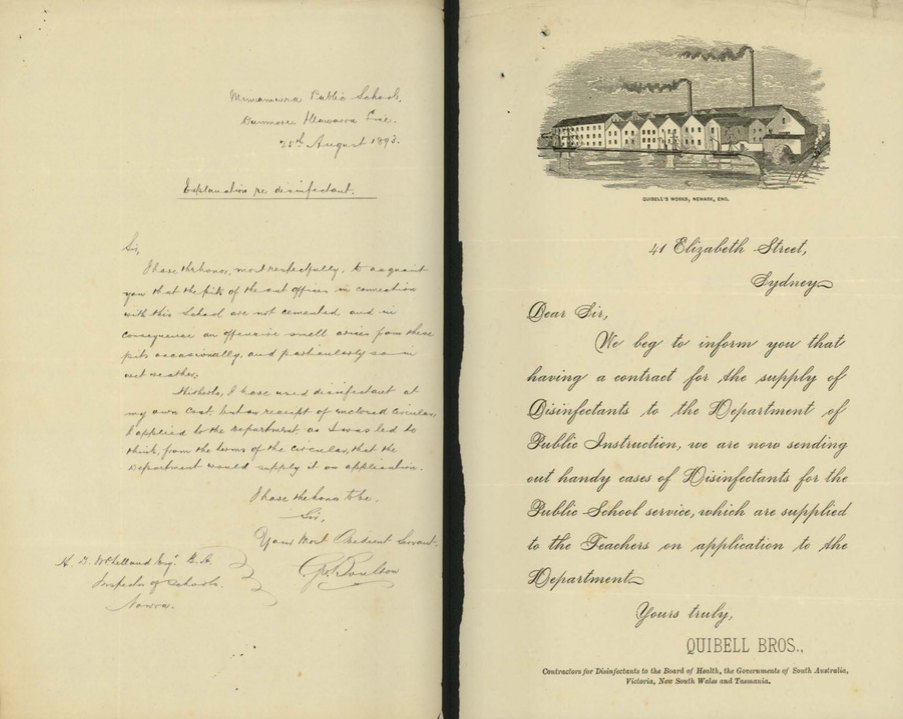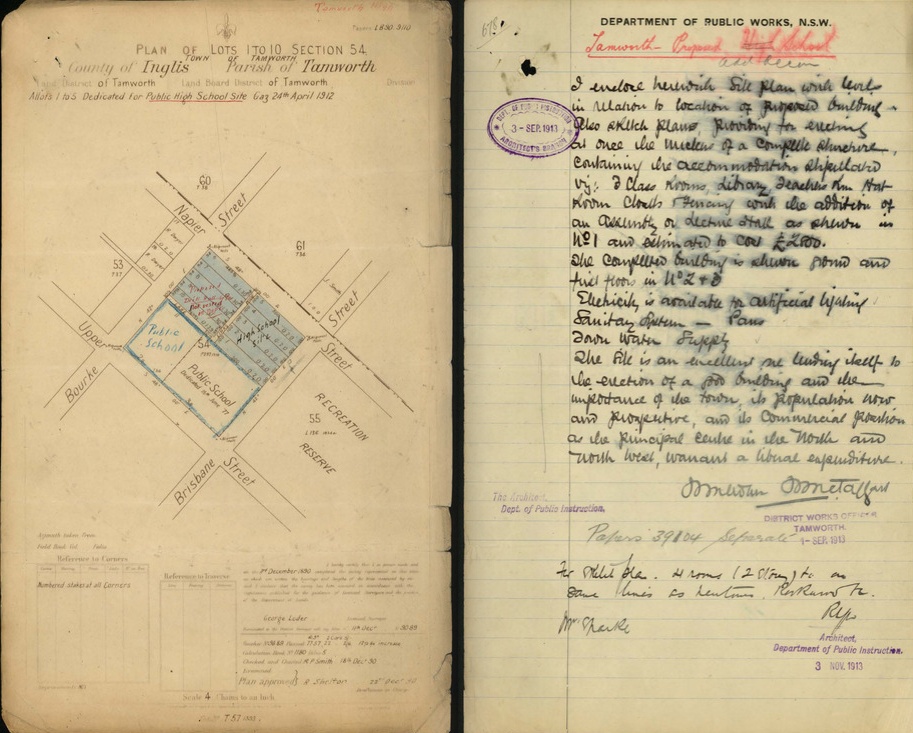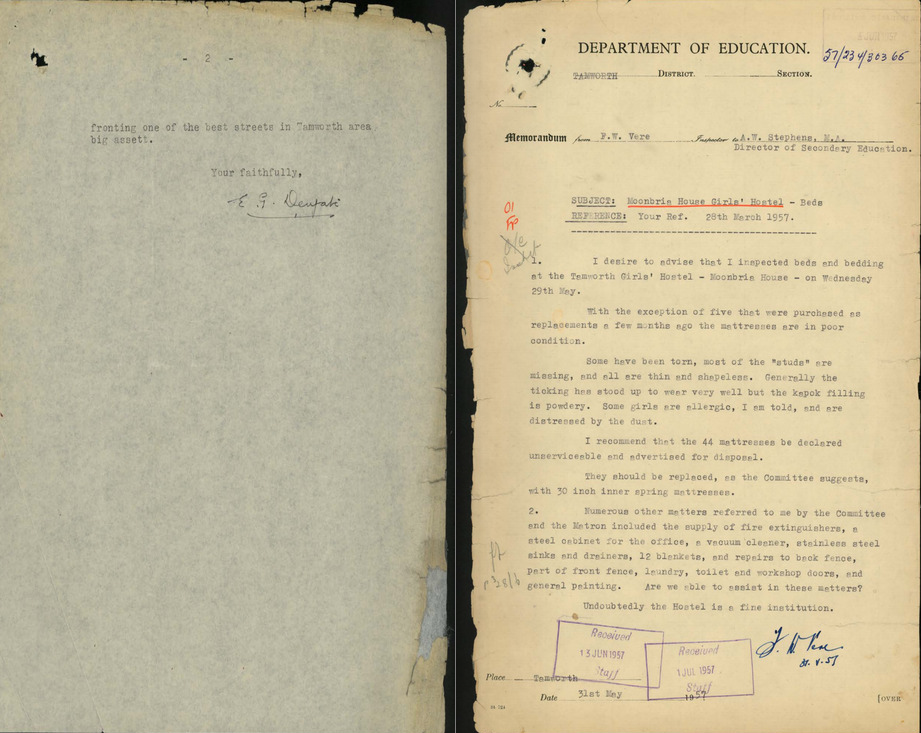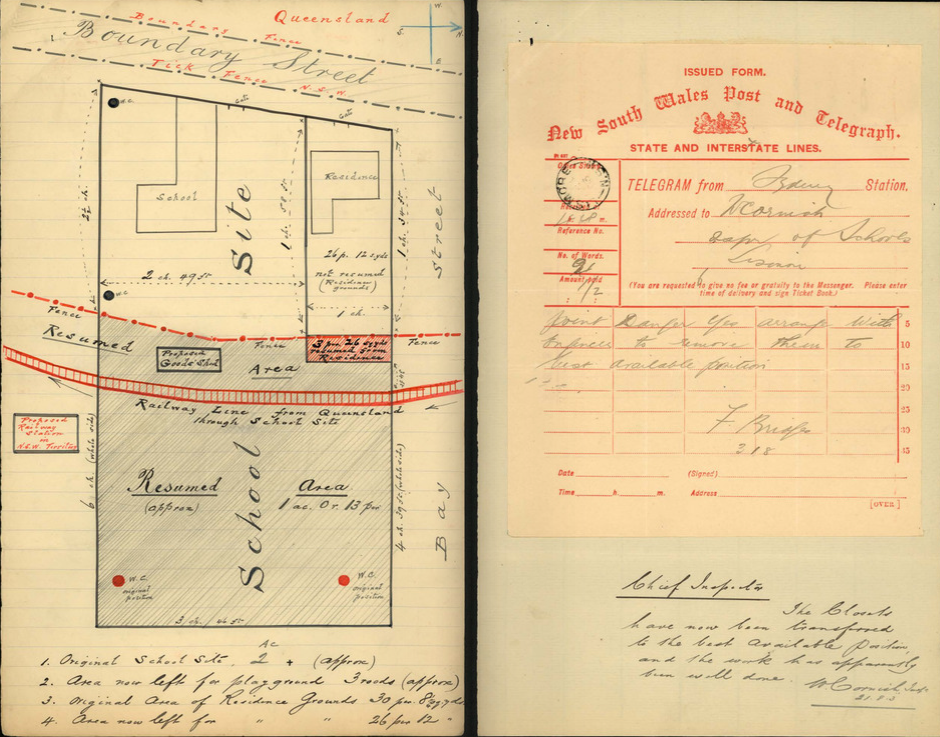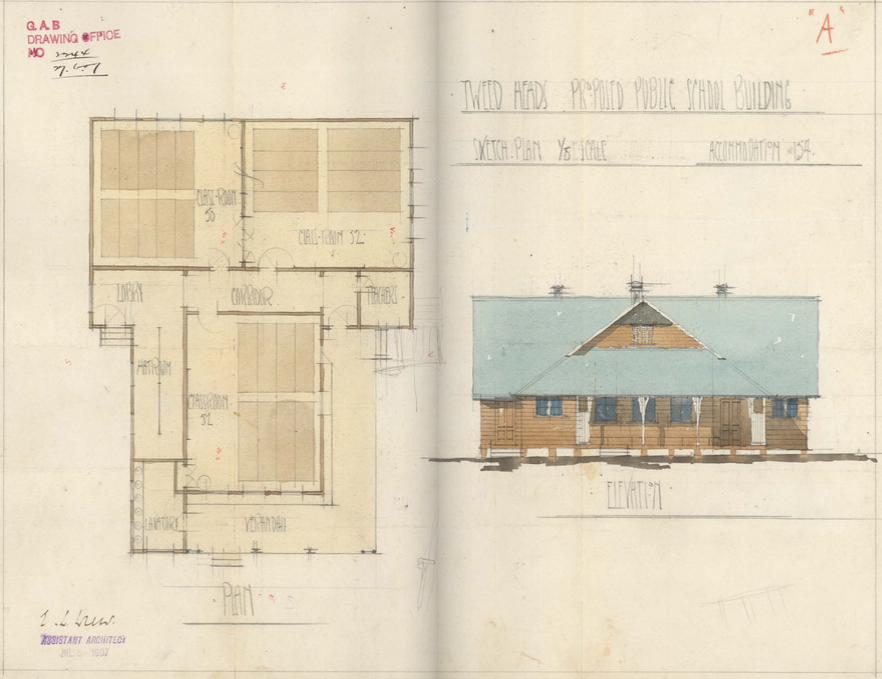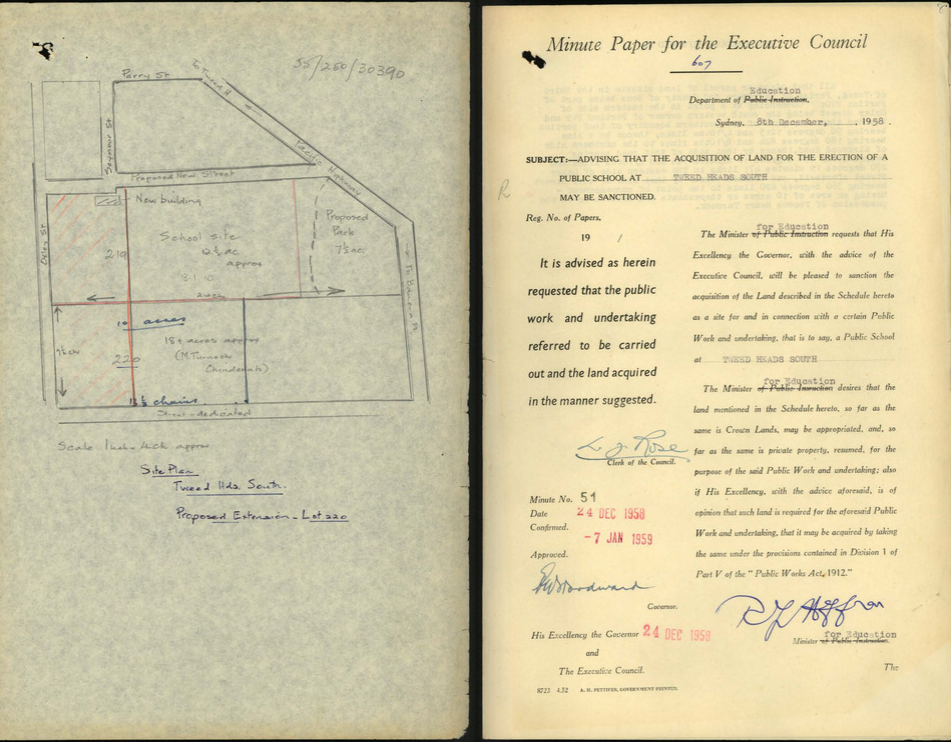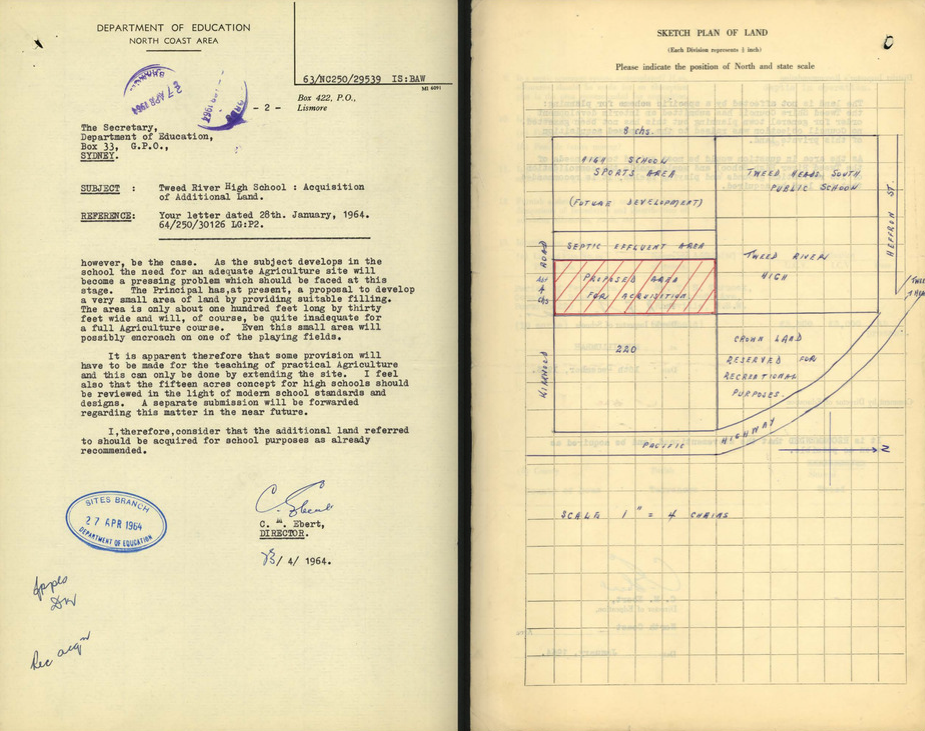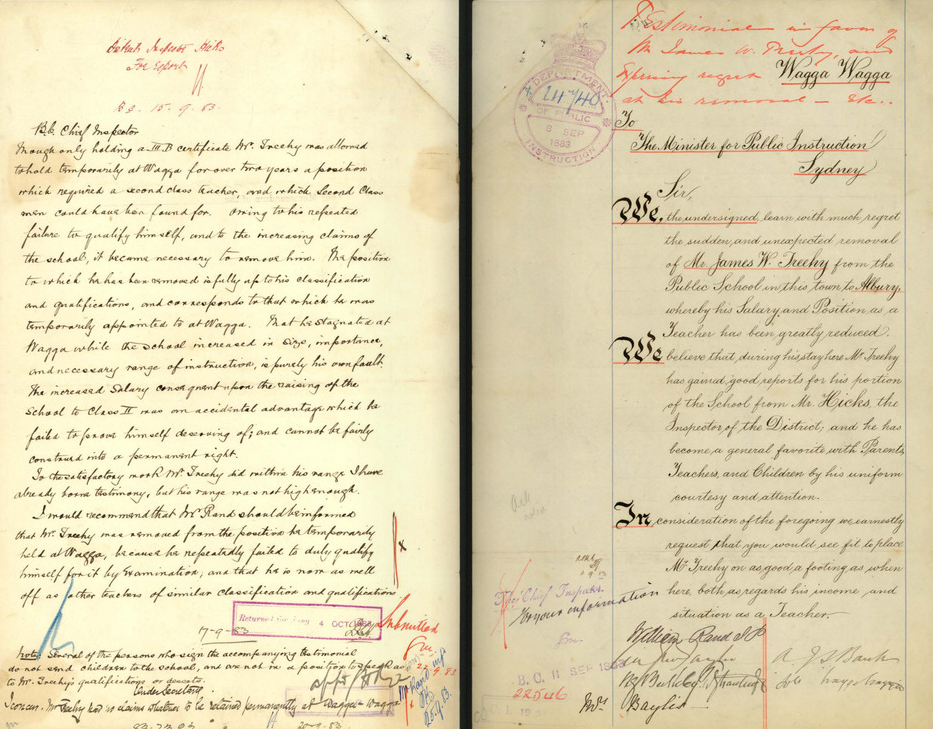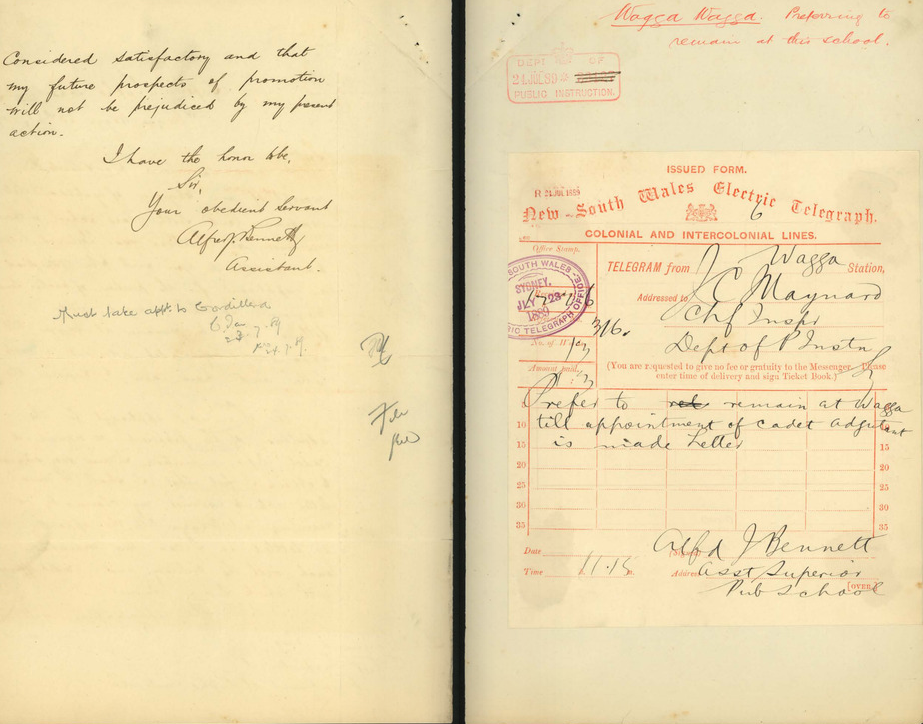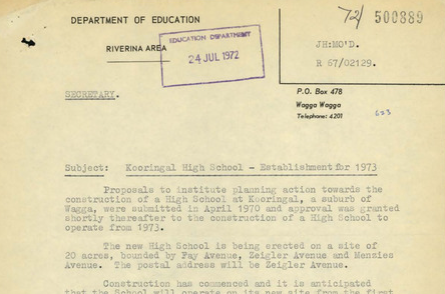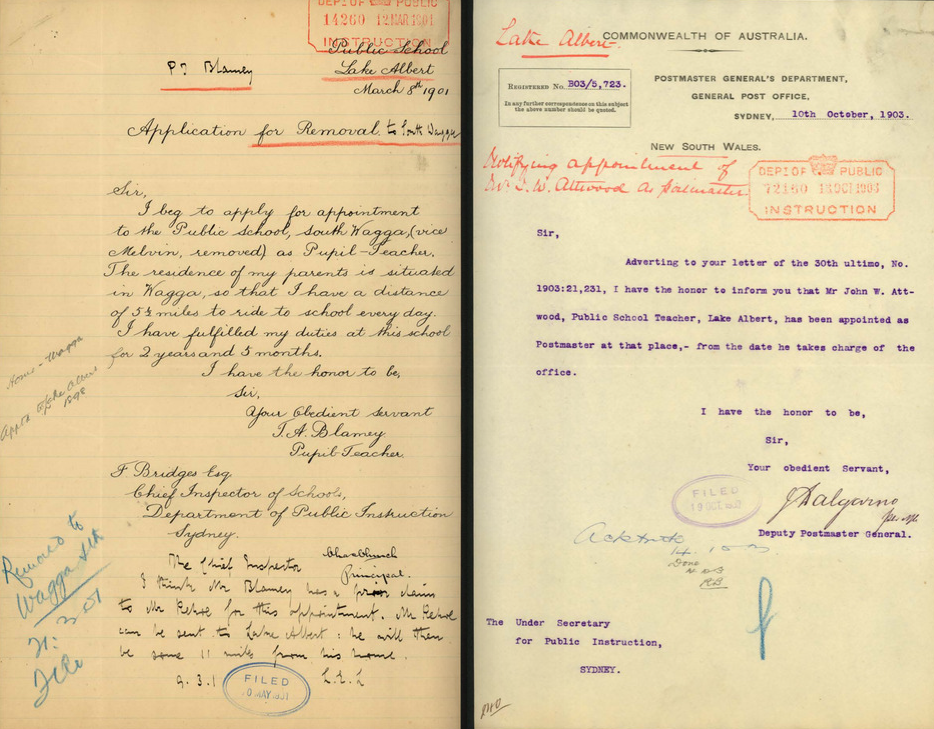Schools: what the files can tell you
School files very strongly reflect the growth or decline of towns and are an excellent source for your local history research.
The school files in the State Archives Collection cover both World War I and World War II but particularly reflect the many impacts of World War I. Teachers enlisted and on return took up teaching again; they applied for rent allowances and reimbursement of travelling expenses; and repaired school residences. Women resign or have their employment terminated when they marry as married women were barred from public sector employment. 20th century increases in population saw local members making representations for more buildings or new schools in the area. The files are an excellent source of information, not only for the history of a school but the history of a local community.
Digitised school files
The series of school files in our Collection [NRS-3829] cover two runs: 1876 to 1939 and 1940 to 1979. They contain all sorts of correspondence that was sent to the Department of Education about a particular public school. For example, there might be applications to have a new school in a town (sometimes with details of possible pupils); teachers' leave and transfer requests; letters from parents about teachers; inspectors' reports; plans of buildings and more. The files below were digitised as part of the Archives in Your Town program.
Broken Hill
The School files show the commencement and growth of the government school system from the first Broken Hill school in 1886 - Broken Hill Public School. Additional public schools opened in 1889 (Alma), 1890 (Broken Hill North) and 1895 (Burke Ward). Increases in population saw Broken Hill Public School and Broken Hill North Public School offer secondary schooling until Broken Hill High was established in 1920.
Petitions for new schools were generally successful though two petitions were needed before Burke Ward was established and it started in a rented Wesleyan hall.
Correspondence shows that additional school buildings and repairs to existing buildings are needed regularly. The Broken Hill climate and its impact on schooling is also raised regularly.
Extracts from the School files
Dubbo
The school files show the commencement and growth of the government school system from the first Dubbo school in 1858 which later became Dubbo Public School. It offered secondary schooling until Dubbo High School was established in 1917. Smaller schools outside Dubbo were established, changed names, changed type of school, prospered and over time closed as communities changed and transport improved. More public schools started in Dubbo in the 20th century including Dubbo South, Dubbo North and Dubbo West reflecting Dubbo’s growth from the 1940s.
Extracts from the School files
Kiama
Both Kiama and Minnamurra schools started up before these files begin in 1876. Kiama Public School offered post-primary schooling between 1890 and 1916 and then secondary schooling from 1944 until Kiama High School was established in 1954. Repairs to school buildings and the teachers’ residences are constantly needed. The original site of Kiama Public School proved too small, particularly after land was resumed for railway purposes.
Schools held school concerts; are used as polling booths and as substitute halls to welcome home World War 1 soldiers and farewell departing residents among other school and town activities. Teachers struggle to find accommodation where there is no residence; they repeatedly request repairs and additions to the school residence; take leave for family emergencies and to march in Sydney on Anzac Day in 1938; propose altered school times to accommodate children helping with the milking; request permission to hold swimming classes and manage the school without water during dry periods.
Parents and Citizens groups and local councils make representations in support of the schools in numerous matters – improved playground areas, for the school to be painted (and volunteered to do so), for permission to hold a Sports Fair to raise money and for improved access to secondary education.
Extracts from the School files
Tamworth
The first school in 1855 later became Tamworth Public School. A second public school opened in 1883 in Tamworth West and both of these schools offered secondary schooling until Tamworth High School was established in 1919. Two more public schools started in the 20th century - Oxley Vale Public School in 1947 and Tamworth South Public School in 1952. The second high school – Oxley - opened in 1968.
Buildings needed repairs from as early as 1880 when the average attendance was 108.9 primary children and 75.4 infants children. The water ran out in 1881 during a dry spell and letters to the Department and a newspaper article led to both temporary and longer term plans for an adequate water supply. Schools closed for a recruitment march and “sham battle” in 1918; participated in Arbor Day activities and held fund raising concerts in the Theatre Royal among other school and town activities.
1919 saw troops from World War I returning and teachers applying for leave to meet relatives in Sydney (approved without pay). Teachers requested transfers to other towns to be close to their families; to run dancing schools; for the replacement of items in the teacher's residence such as the stove and bath; to close the school due to measles including among the teachers.
Extracts from the School files
Tweed Heads
The School files start from the commencement of the first Tweed Heads school in 1876 – Point Danger which later became Tweed Heads Public School. Additional public schools opened including Duranbah in 1892, Fingal Head in 1895 and Tweed Heads South in 1958. Tweed Heads Public School offered secondary schooling until Tweed River High School was established in 1961.
Point Danger started as a provisional school to provide an education for the Pilot and other government employees families. Provisional schools were schools which were established in areas where at least 15 children but fewer than 25 could be expected to attend. Parents had to provide the building and furniture, whilst the Council or the Department of Education paid the teacher and supplied books and equipment.
The files show teachers struggle to find accommodation so sleep in tents and school rooms and write to the Premier in a bid to get a residence, discover part of the school grounds will have railway tracks and a railway station constructed on them, answer searching questions in applications for employment, teach 140 children in rooms designed for 80, teach on verandahs and in converted weather sheds and rented local halls, take leave for diphtheria, apply to have electric light in the school residence, and obtain permission to close the school for the local show, measles and the funeral of a local resident. Parents and Citizens groups make representations in support of the schools in numerous matters – more teachers, safer school sites, fencing school grounds and placing a memorial plaque for a headmaster that died.
Extracts from the School files
Wagga Wagga
Wagga Wagga Public School offered secondary schooling until Wagga Wagga High School was established in 1912. A second public school opened in 1880 in Wagga Wagga North. Smaller schools outside Wagga Wagga were established, changed names, changed type of school, and prospered or closed as communities changed and transport improved. More schools, both public and high, were established as Wagga Wagga grew after World War II.
New public school buildings are needed as populations increase particularly in the 20th Century. The need was met by school tents, the Presbyterian Hall and the Catholic United Charities Auxiliary Hut at the Showground as well as new schools and school buildings. Petitions for new schools are generally successful including for an evening school in 1881.
School tanks run dry and are found to hold water unfit for human consumption. Schools participated in Arbor Day activities, held annual prize giving picnics and managed diphtheria outbreaks. Daily attendance and staffing levels are scrutinised and predicted. Teachers return from military service in Sudan, become Post masters and are subject to complaints. They applied for rent allowances and reimbursement of travelling expenses; suggested land acquisitions and assisted in surveys of child populations for school planning purposes.
Extracts from the School files
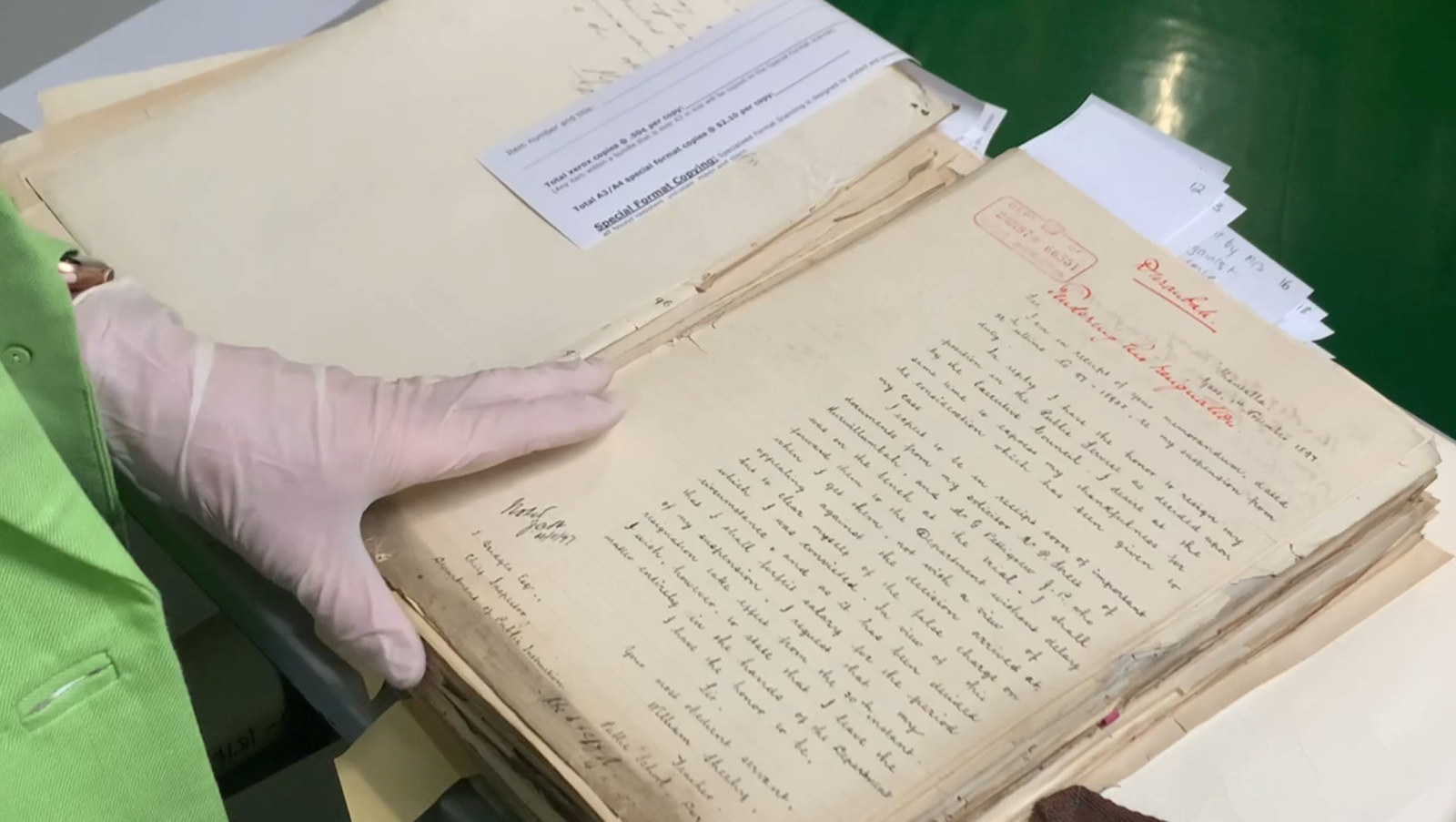
Archives behind the scenes - school files
We hold NSW School Files from 1876 to 1979. They are an amazing source of information, not only for school history but also for the history of a local community
Related
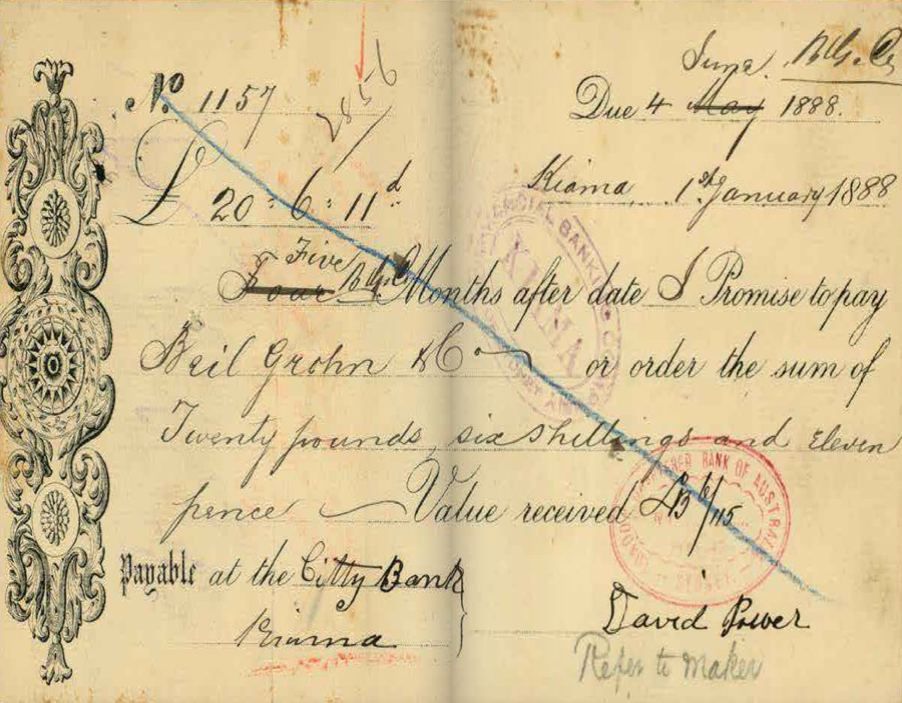
Bankruptcy: what the files can tell you
Bankruptcy files contain lists of creditors that the bankrupt person owed money to and debtors that owed money to the bankrupt person
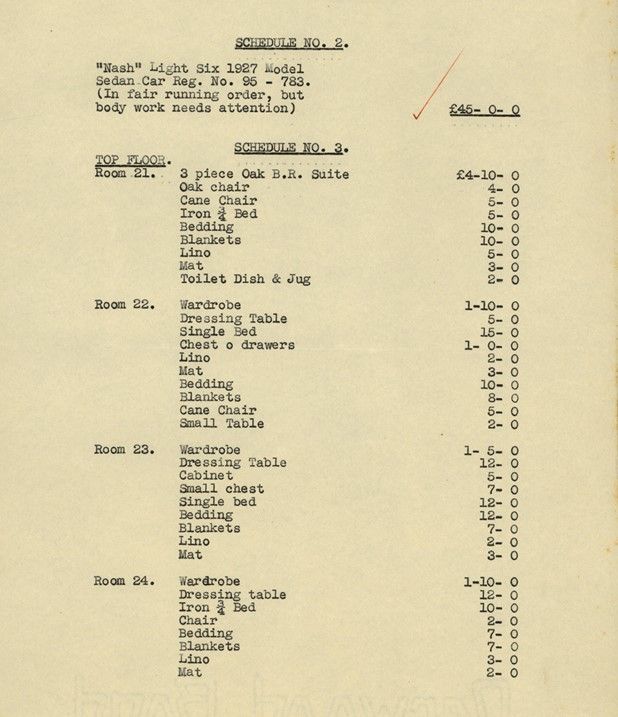
Deceased estates: what the files can tell you
The Stamp Duties Office created a file for every person who died leaving property or other assets ('estates'), which were subject to death duties. Files exist for people from all walks of life, of various ages and financial circumstances
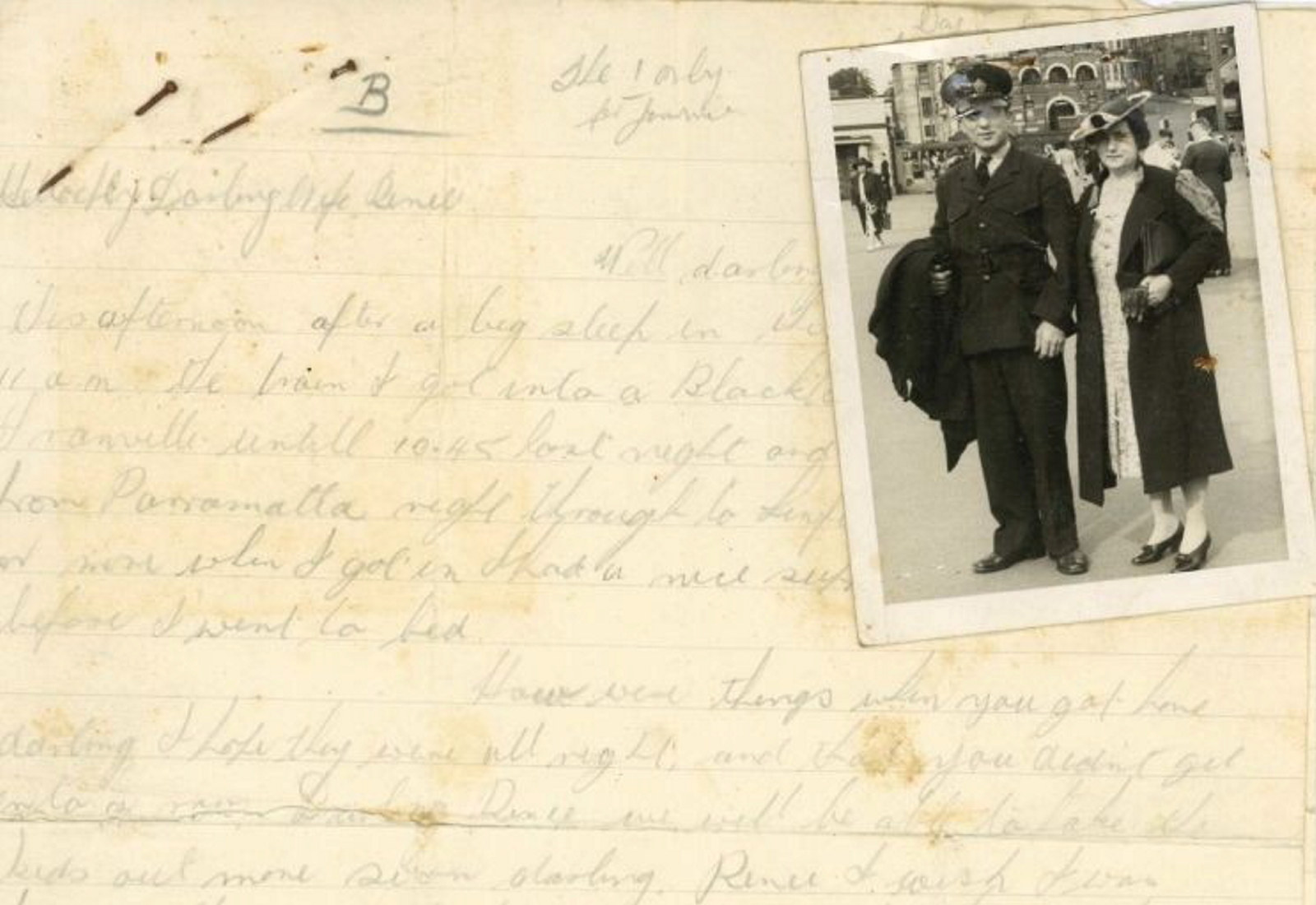
Divorce records: what the files can tell you
Divorce files can be a detailed source of information for family history, providing extra details that may not have been discussed or known within the family

Divorce – decrees nisi
A decree nisi is the first stage in finalising a divorce. It is a conditional court order confirming that the court accepts the grounds for divorce and that all legal requirements have been met
